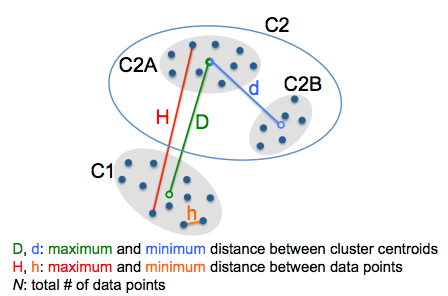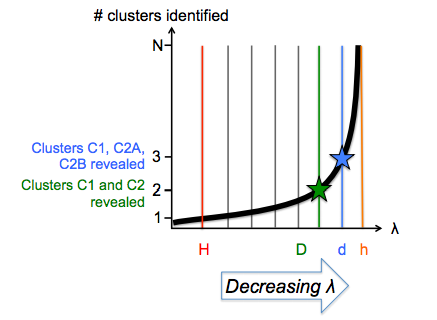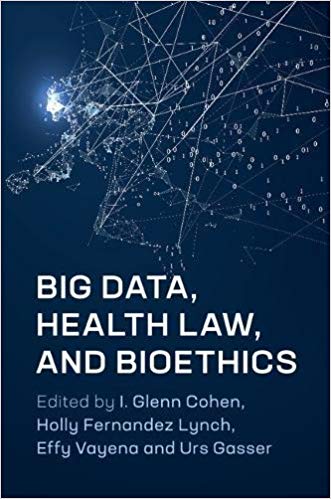Publications and Patents
Research in AI, machine learning, cybersecurity, and wireless networking


CheckNet: Secure Inference on Untrusted Devices
Comiter MZ, Teerapittayanon S, Kung HT
International Conference on Machine Learning and Applications (ICMLA) 2019, December 2019
We introduce CheckNet, a method for secure inference with deep neural networks on untrusted devices. CheckNet is like a checksum for neural network inference: it verifies the integrity of the inference computation performed by untrusted devices to 1) ensure the inference has actually been performed, and 2) ensure the inference has not been manipulated by an attacker.
CheckNet is a general method for securing neural network inference computation: it is completely transparent to the third party running the computation, applicable to all types of neural networks, does not require specialized hardware, adds little overhead, and has negligible impact on model performance. CheckNet can be configured to provide different levels of security depending on application needs and compute/communication budgets. We present both empirical and theoretical validation of CheckNet on multiple popular deep neural network models, showing excellent attack detection (0.88-0.99 AUC) and attack success bounds.


Attacking Artificial Intelligence: AI's Security Vulnerability and What Policymakers Can Do About It
Featured in the Washington Post, September 2019Marcus Comiter
Belfer Center for Science and International Affairs, August 2019
Building artificial intelligence (AI) into critical aspects of society is creating systemic vulnerabilities that can be exploited by adversaries to potentially devastating effect. This report helps to close the gap between black box Silicon Valley AI magic and the careful thinking that needs to get done by policymakers to address this emerging threat.
It explains the underlying vulnerabilities that can be exploited, and explains how unlike traditional cyberattacks that are caused by "bugs" or human mistakes in code, "AI attacks" are enabled by inherent limitations in the underlying AI algorithms. The report then analyzes which critical parts of society are vulnerable to these new types of attacks.
This report proposes "AI Security Compliance" programs to protect against AI attacks. Public policy creating "AI Security Compliance" programs will reduce the risk of attacks on AI systems and lower the impact of successful attacks. Compliance programs would accomplish this by encouraging stakeholders to adopt a set of best practices in securing systems against AI attacks, including considering attack risks and surfaces when deploying AI systems, adopting IT-reforms to make attacks difficult to execute, and creating attack response plans.


Localization Convolutional Neural Networks Using Angle of Arrival Images
Comiter MZ, Kung HT
IEEE Global Communications Conference (GLOBECOM) 2018, December 2018
We introduce localization convolutional neural networks (CNNs), a data-driven time series-based angle of arrival (AOA) localization scheme capable of coping with noise and errors in AOA estimates measured at receiver nodes. Our localization CNNs enhance their robustness by using a time series of AOA measurements rather than a single-time instance measurement to localize mobile nodes.
Our scheme is novel in its use of: (1) CNNs operating on space-time AOA images composed of AOA data from multiple receiver nodes over time, and (2) synthetically-generated perturbed training examples obtained via modeling triangulation patterns from noisy AOA measurements. We demonstrate that a relatively small CNN can achieve state-of-the-art localization accuracy that meets the 5G standard requirements even under high degrees of AOA noise.


Lambda Means Clustering: Automatic Parameter Search and Distributed Computing Implementation
Comiter M, Cha M, Kung HT, Teerapittayanon S
23rd International Conference on Pattern Recognition (ICPR 2016), December 2016
Recent advances in clustering have shown that ensuring a minimum separation between cluster centroids leads to higher quality clusters compared to those found by methods that explicitly set the number of clusters to be found, such as k-means. One such algorithm is DP-means, which sets a distance parameter λ for the minimum separation.
As a general solution for finding λ, in this paper we present λ-means, a clustering algorithm capable of deriving an optimal value for λ automatically. We demonstrate that λ-means discovers the true underlying value of λ asymptotically when run on datasets generated by a Dirichlet Process, and achieves competitive performance on real world test datasets.


A Structured Deep Neural Network for Data Driven Localization in High Frequency Wireless Networks
Comiter MZ, Crouse MB, Kung HT
International Journal of Computer Networks and Communications (IJCNC), May 2017
Next-generation wireless networks such as 5G and 802.11ad networks will use millimeter waves operating at 28GHz, 38GHz, or higher frequencies to deliver unprecedentedly high data rates, e.g., 10 gigabits per second. However, millimeter waves must be used directionally with narrow beams in order to overcome the large attenuation due to their higher frequency. To achieve high data rates in a mobile setting, communicating nodes need to align their beams dynamically, quickly, and in high resolution. We propose a data-driven, deep neural network (DNN) approach to provide robust localization for beam alignment, using a lower frequency spectrum (e.g., 2.4 GHz).
Our methods differ from others that use DNNs as a black box in that the structure of our neural network model is tailored to address difficulties associated with the domain, such as collinearity of the mobile node with antenna arrays, fading and multipath. We show that training our models requires a small number of sample locations, such as 30 or fewer, making the proposed methods practical.


A Data-Driven Approach to Localization for High Frequency Wireless Mobile Networks
Comiter MZ, Crouse MB, Kung HT
IEEE Global Communications Conference (GLOBECOM) 2017, December 2017
To achieve high data rates in a mobile setting, next-generation wireless networks such as 5G networks will use high frequency millimeter-wave (mmWave) bands at 28 GHz or higher. Communicating in high frequencies requires directional antennas on base stations to align their beams dynamically, quickly, and in high resolution with mobile nodes. To this end, we propose a data-driven deep neural network (DNN) localization approach using lower frequency spectrum.
Our primary contributions are: (1) a novel structure for a deep neural network that reflects base station locations, (2) a quantized loss function for neural network training that improves accuracy and reduces the amount of training data needed, and (3) a procedure for generating synthetic data to reduce the required number of real-world measurements needed for training an accurate data-driven localization model.


Millimeter-wave Field Experiments with Many Antenna Configurations for Indoor Multipath Environments
Comiter M, Crouse M, Kung HT, Tarng JH, Tsai ZM, Wu WT, Lee TS, Chang MC, Kuan YC
4th International Workshop on 5G/5G+ Communications in Higher Frequency Bands (5GCHFB) in conjunction with IEEE Globecom 2017, December 2017
Next-generation wireless networks, such as 5G networks, will use millimeter waves (mmWaves) to deliver extremely high data rates. Due to high attenuation at this higher frequency, use of directional antennas is commonly suggested for mmWave communication. We examine four different mmWave systems, operating at two different frequencies (38 and 60 GHz), using a number of different antennas (horn antennas, omnidirectional antennas, and phase arrays).
For each system, we systematically collect performance measurements, and use these to examine the effects of beam misalignment on signal quality, the presence of multipath effects, and susceptibility to blockage. From these field experiments, we discuss lessons learned and draw several conclusions, and their applicability to the design of future mmWave networks.


Sparse Coding Trees with Application to Emotion Classification
Best Paper Award, CVPR-AMFG 2015Chen H-C, Comiter M, Kung HT, McDanel B
IEEE Workshop on Analysis and Modeling of Faces and Gestures (CVPR-AMFG 2015), June 2015
We present Sparse Coding trees (SC-trees), a sparse coding-based framework for resolving misclassifications arising when multiple classes map to a common set of features. SC-trees are novel supervised classification trees that use node-specific dictionaries and classifiers to direct input based on classification results in the feature space at each node.
When used in conjunction with a nonnegativity constraint on the sparse codes and a method to exploit facial symmetry, SC-trees achieve results comparable with or exceeding the state-of-the-art classification performance on a number of realistic and standard datasets.


Taming Wireless Fluctuations by Predictive Queuing Using a Sparse-Coding Link-State Model
Tarsa SJ, Comiter M, Crouse M, McDanel B, Kung HT
ACM MobiHoc 2015, June 2015
We introduce State-Informed Link-Layer Queuing (SILQ), a system that models, predicts, and avoids packet delivery failures caused by temporary wireless outages in everyday scenarios. By stabilizing connections in adverse link conditions, SILQ boosts throughput and reduces performance variation for network applications, for example by preventing unnecessary TCP timeouts due to dead zones, elevators, and subway tunnels.
We present extensive data collection and field-validation of SILQ in airborne, indoor, and urban scenarios of practical interest. We demonstrate TCP throughput gains of 4x with off-the-shelf mobile devices. SILQ addresses delivery failures solely at the link layer, requires no new hardware, and upholds the end-to-end design principle to enable easy integration across applications, devices, and networks.


A Future of Abundant Sparsity: Novel Use and Analysis of Sparse Coding in Machine Learning Applications
Comiter M
Undergraduate Thesis in Computer Science and Statistics, Harvard University
I present novel applications and analysis of the use of sparse coding within the context of machine learning.
Awarded highest honors by both the Harvard Department of Computer Science and Harvard Department of Statistics.

Multi-stage Image Super-resolution with Reference Merging Using Personalized Dictionaries
Lin CK, Comiter MZ, Gulati H, Chinya GN
United States Patent US 9697584 B1, Issued July 2017
An apparatus for multi-stage super-resolution is described herein. The apparatus includes a personalized dictionary, a plurality of super-resolution stages, and a reference merger. Each of the plurality of super-resolution stages correspond to at least one personalized dictionary, and the personalized dictionary is applied to an input image that is sparse-coded to generate a reconstructed image.

Chapter 10: Data Policy for Internet of Things Healthcare Devices
Available on Amazon, Cambridge Press, and Barnes & NobleMarcus Comiter
Volume Editors: I. Glenn Cohen, Holly Fernandez Lynch, Effy Vayena, Urs Gasser
Cambridge University Press, 2018
Author of Chapter 10: "Data Policy for Internet of Things Healthcare Devices: Aligning Patient, Industry, and Privacy Goals in the Age of Big Data" in book Big Data, Health Law, and Bioethics, published by Cambridge University Press in March 2018.
Chapter proposes and explains "Third Party Data Auditors" (TPDAs) as a regulatory regime of the healthcare IoT. Published in concert with Conference on Big Data, Health Law, and Bioethics, The Petrie-Flom Center at Harvard Law School.


Data Policy for Internet of Things Healthcare Devices: Aligning Patient, Industry, and Privacy Goals in the Age of Big Data
Comiter M
Conference on Big Data, Health Law, and Bioethics, The Petrie-Flom Center at Harvard Law School, May 2016
Preventative healthcare aimed at reducing the incidence of chronic diseases will be a hallmark of twenty-first century healthcare systems. A key enabler of these preventative techniques will be the Internet of Things (IoT), an emerging technological paradigm connecting millions of personal healthcare devices to the Internet, allowing an unprecedented scale and granularity of biomedical data collection.
I propose the concept of "Third Party Data Auditors" (TPDAs) to embed these principles within a regulatory regime of the healthcare IoT. Through this market and innovation-based approach, I argue that TPDAs can be an effective first step in regulating an increasingly data driven healthcare system.

Algorithmic Allegories
See New Mega-Hit Case Study on Tech Ethics for press coverageMarcus Comiter, Ben Sobel, Jonathan Zittrain
Harvard Law School Case Study, May 2016
Algorithmic Allegories chronicles the Proceedings of the National Academy of Sciences emotion contagion study controversy and the legal and policy issues it introduced, as well as offering six related hypotheticals to probe the moral, legal, and technical implications of algorithms in modern society.


Nonlinear Compressive Sensing for Distorted Measurements and Application to Improving Efficiency of Power Amplifiers
Chen H-C, Kung HT, Comiter M
IEEE International Conference on Communications (ICC 2017), May 2017
Compressive sensing, which enables signal recovery from fewer samples than traditional sampling theory dictates, assumes that the sampling process is linear. However, this linearity assumption may not hold in the analog domain without significant trade-offs. We describe a nonlinear compressive sensing formulation and associated signal recovery algorithms, providing both compression and improved efficiency of a power amplifier simultaneously with one procedure.

New Paradigms for Distributed Computing on Secure Next Generation Networks
Comiter M, Kung HT, Teerapittayanon S
National Science Foundation (NSF) Applications and Services in the Year 2021 Workshop, January 2016
Recent advances in high speed, low latency networks and new computer networking paradigms such as SDN and fog computing will enable opportunities for new developments in distributed computing, the Internet of Things, and computing paradigms to support a new generation of applications. In this whitepaper, we outline a number of challenges and opportunities enabled by these developments.

Introductory R
This is a brief introduction to R and important topics in programming to help readers get accustomed to programming and statistical paradigms and terminology. The chapters are purposely brief so that readers can quickly learn these basic topics and then be able to comprehend and better leverage other R manuals and resources. Released free online at www.introductoryR.com under a public license.